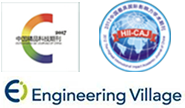Abstract:
Due to its potential application in solving key technical problems, the antireflective surface with superhydrophobic properties has received extensive attention. The micro-nano structures of superhydrophobic surface combined with the low surface energy are resistant to the wettability of the material effectively and make self-cleaning come true. The water contact angle of the superhydrophobic surface is greater than 150°, so that the water droplets can wrap the impurities on the surface and roll off to achieve self-cleaning. Superhydrophobic surface is more stringent than hydrophobic surface, which can be achieved through two ways: One is to create rough surface directly with low surface energy materials, the other is to create rough surface first, and the low surface energy materials can be used to modify it. At the same time, high transmittance is the core to improve the performances of optical devices, such as photovoltaic module, etc. Therefore, it is of great significance and research prospect to design and achieve self-cleaning superhydrophobic surface with high transmittance. This review focuses on the development of different anti-reflective and superhydrophobic surface materials and discusses the future application of low reflection surface materials with self-cleaning superhydrophobic.


 下载:
下载: